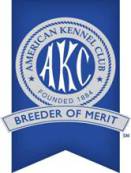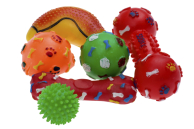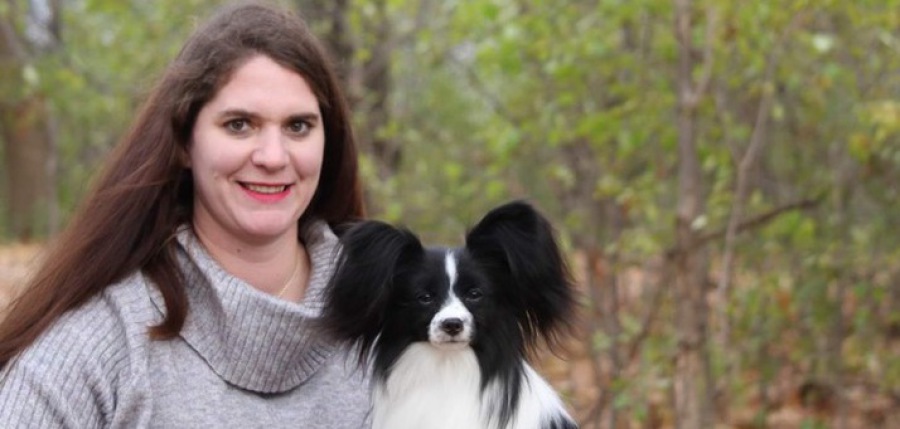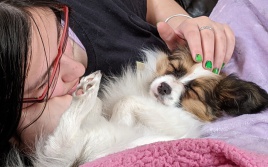Puppies: Basic Obedience
Experience! Reliability! Expertise!
A puppy can learn a great deal, even as early as 7 weeks of age, if learning is fun and presented in the form of gentle play. Motivational methods work best for the tender young puppy soul. Reward
desired behaviors by offering toys, food and praise so the puppy wants to obey. Whenever possible, try to arrange the situation so he can't make a mistake. Never use physical punishment on a young
puppy as you may damage him both mentally and physically.
Most puppies, like young children, enjoy learning, but have short attention spans. The following exercises can be done several times a day. They take just a few minutes, but will make a tremendous
difference in your puppy's attitude. To establish a positive rapport with your puppy and prevent many future problems, start training a few days after your puppy settles in.
We can only offer very brief explanations here, and trainers have many variations on these concepts. If you run into problems, consult a professional trainer. A puppy can start more formal obedience
training at about four to six months of age.
Sit:
Move a toy or piece of food (the motivator) from a position in front of the puppy to a point up over his head and say "Sit". The pup will probably raise his head to follow the motivator and in the
process, lower his rear end to the floor. You may gently help the pup at first by tucking his bottom under with your free hand. When he sits, praise the pup exuberantly and give him the toy or treat
as a reward.
Down:
Show the puppy a tantalizing piece of food or a toy to get his attention. Slowly lower the toy to the floor. If needed, help him down with very slight pressure on his shoulders. (Don't put pressure
on his back, or you can hurt him.) Give him the toy when he lies down, or the food,even if just for a second. Reward profusely. Later you can extend the length of time he must stay down before you
give him the toy.
Wait:
Have the puppy sit. Say "Wait" and back away from the puppy, one or two steps. Praise the puppy for staying. After just a second or two, reward, praise, and release. Always reward the puppy when he's
still waiting, not after he gets up, so he associates the reward with waiting and not the release. If the puppy gets up too soon, simply repeat the exercise. Gradually increase the time he waits.
Heel:
Get your puppy's attention with a delectable treat at about his head level on your left-hand side. Say "Strut" or "Heel" or "Let's go" (choose one and be consistent) and walk briskly forward. Let the
puppy munch a bit as you walk. Go only a few steps at first, then extend the range. Release the pup and praise him. As the puppy progresses, lift the food a little higher, but do not reward the pup
for jumping.
Come:
This game takes two people, and is a great way to get your puppy excited about coming to you. Person 1 holds the puppy back while Person 2 tantalizes him by waving a treat or toy in his face, just
out of reach. Then Person 2 runs away, calling "Rover, Come!" in an excited tone of voice. Person 1 releases the pup, who comes running wildly after Person 2! Person 2 rewards the dog with lots of
praise and gives Rover the toy or treat she was waving.
When teaching a young pup to come to you, call him several times throughout the day around the house and yard, even if you don't want him to come for any particular reason. Each time he comes, praise
and reward him. (You can keep some of his regular dry dog kibble in your pocket and give him one whenever he comes if you don't want to overload him with fancy fattening treats.) The puppy will think
coming to you is terrific!
If you don't have an assistant handy, try this game. Have the puppy on a loose long line or flexi-lead. Show him a treat or toy. Call his name and then say "Come!" in an energized tone of voice. If
he comes to you, reward with a toy or a bit of food and excited praise. If he doesn't come right away, tug gently on the leash and move backwards, away from the puppy. If you run towards him, he may
think you are playing a chase game and run away from you!
As your puppy gets a little older and more independent, the long line or flexi-lead will guarantee that he will always come when you call. This is especially useful outside or at parks where he may
find many new and interesting distractions. Always reward him for coming. Never scold or punish the dog when he comes to you. (If you must punish the dog for some bad behavior, just go get him.)
Don't use the "Come" command outdoors unless your puppy is on a leash, so you can be sure he will obey. Soon he will realize that he must come every time you call and that coming is fun!
Conclusion:
Training your puppy is enjoyable and worthwhile. You will develop a rewarding bond with your puppy and an activity you can do together even after the dog is grown. An untrained dog can be a pest, a
problem and a even a danger. A well-trained dog is a good friend and an asset to his family and community.




